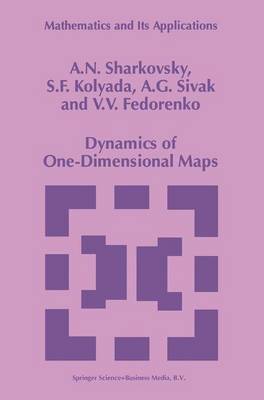Mathematics and Its Applications
2 primary works
Book 250
Difference Equations and Their Applications
by A.N. Sharkovsky, Y. L. Maistrenko, and E.Yu Romanenko
Published 31 March 1993
The theory of difference equations is now enjoying a period of Renaissance. Witness the large number of papers in which problems, having at first sight no common features, are reduced to the investigation of subsequent iterations of the maps f· IR. m ~ IR. m, m > 0, or (which is, in fact, the same) to difference equations The world of difference equations, which has been almost hidden up to now, begins to open in all its richness. Those experts, who usually use differential equations and, in fact, believe in their universality, are now discovering a completely new approach which re sembles the theory of ordinary differential equations only slightly. Difference equations, which reflect one of the essential properties of the real world-its discreteness-rightful ly occupy a worthy place in mathematics and its applications. The aim of the present book is to acquaint the reader with some recently discovered and (at first sight) unusual properties of solutions for nonlinear difference equations. These properties enable us to use difference equations in order to model complicated os cillating processes (this can often be done in those cases when it is difficult to apply ordinary differential equations). Difference equations are also a useful tool of syn ergetics- an emerging science concerned with the study of ordered structures. The application of these equations opens up new approaches in solving one of the central problems of modern science-the problem of turbulence.
Book 407
Dynamics of One-Dimensional Maps
by A.N. Sharkovsky, S.F. Kolyada, A.G. Sivak, and V.V. Fedorenko
Published 30 April 1997
maps whose topological entropy is equal to zero (i.e., maps that have only cyeles of pe 2 riods 1,2,2 , ... ) are studied in detail and elassified. Various topological aspects of the dynamics of unimodal maps are studied in Chap ter 5. We analyze the distinctive features of the limiting behavior of trajectories of smooth maps. In particular, for some elasses of smooth maps, we establish theorems on the number of sinks and study the problem of existence of wandering intervals. In Chapter 6, for a broad elass of maps, we prove that almost all points (with respect to the Lebesgue measure) are attracted by the same sink. Our attention is mainly focused on the problem of existence of an invariant measure absolutely continuous with respect to the Lebesgue measure. We also study the problem of Lyapunov stability of dynamical systems and determine the measures of repelling and attracting invariant sets. The problem of stability of separate trajectories under perturbations of maps and the problem of structural stability of dynamical systems as a whole are discussed in Chap ter 7. In Chapter 8, we study one-parameter families of maps. We analyze bifurcations of periodic trajectories and properties of the set of bifurcation values of the parameter, in eluding universal properties such as Feigenbaum universality.

